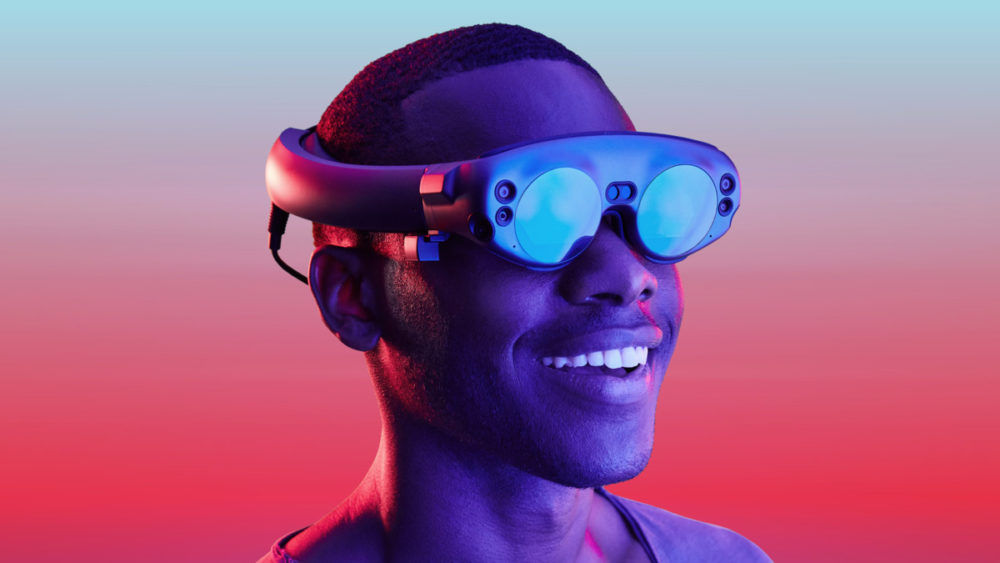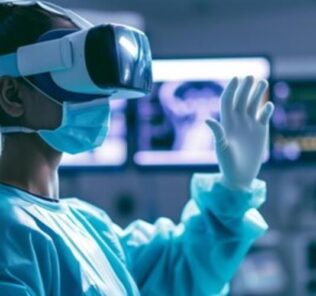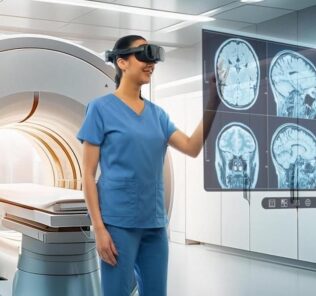Latest Trends in VR, an Expanding Reality for Simulation
VR is becoming a reality for healthcare simulation more so every week, and so today we are going to share a few new virtual reality technologies that will have an impact to our field in the very near future. From haptics devices that let you ‘feel’ your virtual environment to real time animated human AI and first-person experiences of patient lives, these new developments are whats in store for all of us in medical simulation in the years to come. Is your simulation center using VR yet? It should be!
Media Outlets Cover Realism of MICA AI from Magic Leap
Considered by some to be the future of VR engagement, Magic Leap provides a unique hardware application for Virtual Reality with MICA – an AI assistant with realism you won’t believe. Announced two weeks ago at Leap Con, the audience was taken aback by the reality of the simulated human they saw before them.
Sponsored Content:
Dean Takahashi of Venturebeat shared about his augmented reality experience of MICA:
When I noticed how attentive she was, I moved my head forward and looked in her eyes. She did the same and looked at me. I moved my head back and she moved her head back too. She was mimicking some of the movements that she saw me make. She didn’t talk, but that is coming in the future.
On stage today at the Magic Leap L.E.A.P. event, Andrew Rabinovich, head of AI at Magic Leap, and John Monos, head of human-centered AI, talked about how they see digital humans and AI-based virtual avatars becoming real in the coming years on the Magic Leap platform.
These avatars will be like fully embodied Amazon Alexa smart speakers. When you wonder what the song was that you liked so much at the Pink Floyd concert last year, the virtual human, dubbed Aya in Magic Leap’s stage talk, will answer that it was “Another Brick in the Wall.” Aya will get to know you and your emotions. If your friend Erika comes over, Aya will detect that you are happy when you talk with Erika, and it will store that in her AI memory, Rabinovich said.
Sponsored Content:
Late this year, Magic Leap will roll out avatar chat for its users. Over time, the company hopes to release all of the tools and technology that will make digital humans possible. Mica was powered by Unreal Engine 4, said Nick Whiting of Epic Games, maker of the Unreal Engine.”
About the Magic Leap One Headset: Far more than a headset, Lightwear is a portal into worlds within our world. Its cameras, sensors, speakers and optical relay work together with the superpowered processor in the Lightpack to provide unique input to your visual system for unparalleled experiences. Retinas are the canvas, light is the medium, Magic Leap One is the brush. Superpowered and Lightpack, they have squeezed Magic Leap One’s awesome processing power into a small and portable Lightpack that clips right onto your pocket. Inside this engine is an integrated GPU and CPU that generates high-fidelity, gaming-quality graphics to create next-level experiences. And not being wired to a desktop means you can dodge the jellyfish after you’ve made your kitchen into a coral reef.
Imagine putting on glasses and being in front of any simulated patient imaginable — that responds to you in real time. Blending cameras, motion sensor tracking, augmented reality, and amazing graphics output — Magic Leap continues to inspire developers from around the world to push new boundaries in virtual engagement. The new Magic Leap One is really only available for developers at this time as the cost is too high for general consumers, but that will change when the demand increases, and the software it there to start backing it up. Learn more on Magic Leap’s website.
Compared to Other Media, Virtual Reality Can Help Make People More Compassionate
EurekaAlert news recently covered how a “Stanford-developed virtual reality experience, called “Becoming Homeless,” is helping expand research on how this new immersive technology affects people’s level of empathy.” According to new Stanford research, people who saw in virtual reality, also known as VR, what it would be like to lose their jobs and homes developed longer-lasting compassion toward the homeless compared to those who explored other media versions of the VR scenario, like text.
These findings are set to publish Oct. 17 in PLOS ONE. “Experiences are what define us as humans, so it’s not surprising that an intense experience in VR is more impactful than imagining something,” said Jeremy Bailenson, a professor of communication and a co-author of the paper.
We all know in medical education the need for connecting providers to the experiences of patients — and what better way than through a direct personalized experience of a virtual reality encounter? Eureka explains how this project connects users to empathy:
In addition, according to the first study, 82 percent of participants in the VR condition signed a petition supporting affordable housing versus 67 percent of the people who read a narrative that asked them to imagine becoming homeless.
In the second study, 85 percent in the VR condition signed the petition in comparison to 63 percent who read the narrative. Of participants who went through the two-dimensional version of the VR experience, 66 percent signed the petition.
“What’s special about this research is that it gives us longitudinal evidence that VR changes attitudes and behaviors of people in a positive way,” Bailenson said.
What patient experience curriculum do you think would also be a good fit for healthcare learners?
“Feeling” is Not Far Away From VR Experiences
DigitalTrends shared last week about a new Haptic device glove that lets your feel virtual objects. As “Virtual reality can be a truly immersive experience, but a touch of an object in the virtual world doesn’t quite equate to a physical touch you would expect in real life. That is exactly what scientists from EPFL and ETH Zurich have worked to address with newly developed thin and light VR gloves.”
Called Dextres, the glove comes in at less than 8 grams per finger and allows for haptic feedback in “unparalleled” freedom of movement when touching objects in the virtual world.
“The human sensory system is highly developed and highly complex. We have many different kinds of receptors at a very high density in the joints of our fingers and embedded in the skin. As a result, rendering realistic feedback when interacting with virtual objects is a very demanding problem and is currently unsolved. Our work goes one step in this direction, focusing particularly on kinesthetic feedback,” Otmar Hilliges, head of the Advanced Interactive Technologies Lab at ETH Zurich, said in a statement.
The Dextres glove improves on current VR gloves by removing a bulky exoskeleton, pumps, and thick cables. It is a step in the right direction and researchers are looking to scale up the glove and bring it to other parts of the body using conductive fabric. Though just a concept for now, the technology definitely looks promising for gamers and the augmented reality field.
Being able to feel the surgical tool in your hand while still performing with full range of motion will further develop sensory-based learning for surgeons, or any other healthcare provider for that matter.
For all the Latest VR in Simulation News, Subscribe to Our Free Newsletter!
Lance Baily, BA, EMT-B, is the Founder / CEO of HealthySimulation.com, which he started in 2010 while serving as the Director of the Nevada System of Higher Education’s Clinical Simulation Center of Las Vegas. Lance also founded SimGHOSTS.org, the world’s only non-profit organization dedicated to supporting professionals operating healthcare simulation technologies. His co-edited Book: “Comprehensive Healthcare Simulation: Operations, Technology, and Innovative Practice” is cited as a key source for professional certification in the industry. Lance’s background also includes serving as a Simulation Technology Specialist for the LA Community College District, EMS fire fighting, Hollywood movie production, rescue diving, and global travel. He and his wife live with their two brilliant daughters and one crazy dachshund in Las Vegas, Nevada.
Sponsored Content:


















